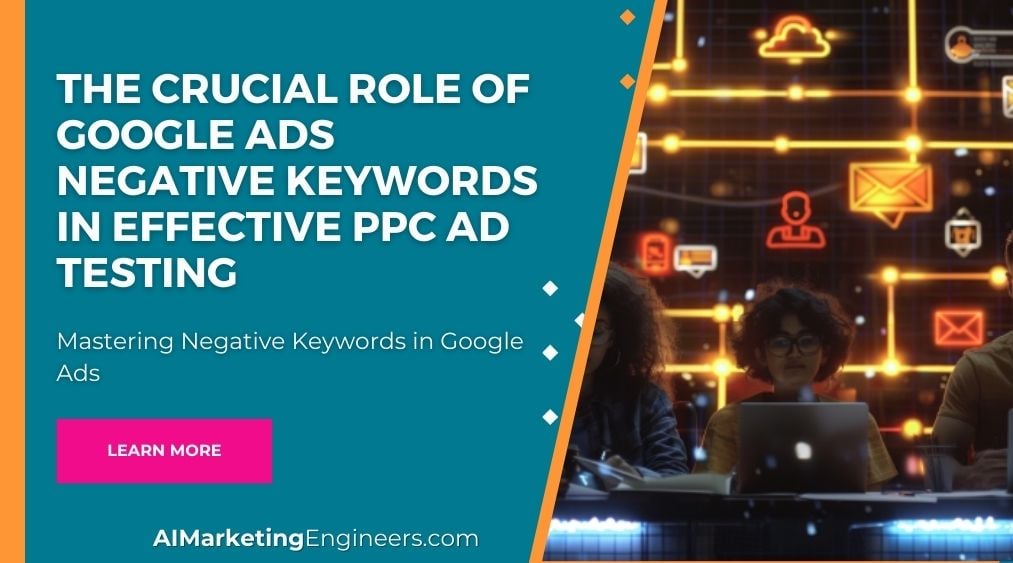Key Takeaways
✅ Focus on Early Stages of the Buyer’s Journey: Measuring Marketing Qualified Leads (MQLs), activations, and signups helps assess the effectiveness of early-stage marketing efforts. By tracking these metrics, businesses can better understand how well they generate awareness and interest, allowing for targeted improvements.
✅ Analyze Contribution to Total Revenue: Evaluating the contribution to total revenue from different marketing channels, product lines, or customer segments ensures strategic resource allocation. Identifying high-performing areas enables the business to invest effectively and drive growth.
✅ Leverage Narrative and Social Media Engagement: A compelling narrative that resonates with the target audience is key to successful demand generation. Consistent and engaging social media interactions build relationships and foster a sense of community, ultimately strengthening brand recognition and customer loyalty.
Introduction
Are you genuinely measuring what matters in your demand generation strategy? While demand generation plays a vital role in driving customer interest and generating leads, the real challenge lies in accurately tracking its success. In the fast-paced world of B2B marketing, understanding and identifying the right metrics is crucial. Many businesses fall into the trap of relying on surface-level indicators like website traffic or social media engagement, which can be misleading. Instead, focusing on meaningful metrics like Marketing Qualified Leads (MQLs), cost per acquisition (CPA), and customer lifetime value (CLV) can provide real insights and guide more effective decisions.
As companies strive to adapt to changing market conditions and increasing competition, measuring what truly matters has never been more important. This article delves into the nuances of demand generation, challenges common beliefs, addresses popular fears, and offers cutting-edge solutions to maximize ROI. Get ready to uncover actionable insights and groundbreaking information that will transform your approach to demand generation.
Top Statistics
| Top Statistics | Insight |
|---|---|
| Demand Generation Software Market Growth: The global demand generation software market was valued at USD 4,486.39 million in 2022 and is expected to grow to USD 8,350.8 million by 2028, with a Compound Annual Growth Rate (CAGR) of 10.91% from 2022 to 2028. | This growth trajectory highlights the increasing importance of demand generation software in modern marketing strategies, suggesting that investments now could yield substantial returns in the future. |
| Budget Allocation: B2B marketing leaders spend 20% of their marketing activity budget on demand generation, with 38% spending more on demand gen than last year and only 10% spending less. | These figures suggest a strong confidence among B2B leaders in demand generation tactics, with many willing to increase their investment even amidst economic uncertainties. |
| Content Marketing Effectiveness: 67% of B2B marketers said content marketing has helped them generate demand/leads. | This statistic underscores the crucial role of content marketing in attracting and nurturing potential leads, cementing its place in a sound demand generation strategy. |
| Lead Nurturing Benefits: The top benefits marketers see from lead nurture programs include generating warmer, sales-ready leads (71%), segmenting prospects based on interests/behaviors (56%), and getting better responses to campaigns/offers due to targeted relevance (55%). | Effective lead nurturing results in more sales-ready leads and improved campaign responses, making it a non-negotiable part of any demand generation effort. |
| Account-Based Marketing: Account-based marketing boosts sales metrics, including a 28% increase in overall account engagement and a 25% rise in conversion rates. | The significant impact of account-based marketing on sales metrics makes it a powerful tool for businesses looking to enhance their demand generation results and ROI. |
Definition and Importance of Demand Generation
Understanding demand generation is crucial for any B2B marketer. Simply put, demand generation encompasses the marketing activities aimed at creating interest and awareness in a company’s products or services. Its importance lies in its ability to build valuable relationships with potential customers, turning interest into action and, ultimately, revenue. However, measuring the success of these efforts is a persistent challenge. Demand generation helps in nurturing leads through personalized content and engagement. It also supports brand positioning by consistently communicating value propositions. Effective demand generation strategies can significantly shorten sales cycles and increase conversion rates.
Key Metrics for Demand Generation
To measure demand generation, one must grasp several key metrics. Marketing Qualified Leads (MQLs) are leads deemed ready for the sales team based on predetermined criteria. Sales Qualified Leads (SQLs) have passed through the MQL stage and are considered highly likely to become paying customers. Cost Per Lead (CPL) tracks the expenses involved in acquiring each lead, while Cost Per Acquisition (CPA) measures the cost to gain a new customer. Customer Lifetime Value (CLV) quantifies the total revenue a business expects from a single customer account. Lastly, Return on Investment (ROI) assesses the overall efficiency of demand generation strategies by comparing the revenue generated against the cost incurred. Monitoring these metrics helps identify areas for improvement. Regular analysis of these metrics ensures alignment with business goals. Understanding these metrics can guide resource allocation for better results.
Measuring Demand Generation Success
Setting clear, measurable goals is the foundation of effective demand generation. Marketers should track key performance indicators (KPIs) such as website visits, social media engagement, email open rates, and lead conversion rates. Data-driven insights from these KPIs allow businesses to fine-tune their campaigns, making data optimization a critical practice for improved results. For example, analyzing the conversion rate from web traffic can help in understanding which content pieces are most effective in pulling in qualified leads. Regularly reviewing KPIs ensures strategies remain relevant. Adjusting tactics based on KPI analysis can enhance overall campaign performance. Using advanced analytics tools can provide deeper insights into demand generation effectiveness.
Avoiding Misleading Metrics
Some metrics might not paint an accurate picture of demand generation success. For instance, high numbers of leads generated can be misleading if those leads aren’t converting into customers. Similarly, increased website traffic and high social media engagement don’t necessarily translate to improved sales or brand loyalty. These metrics can be superficial if not evaluated in the context of the ultimate business objectives. Focusing on how these metrics contribute to actual conversions and revenue is more meaningful. Prioritizing quality over quantity in metrics assessment is crucial. Evaluating the customer journey can provide context to these metrics. Misleading metrics can lead to misallocation of resources and misguided strategies.
Aligning Metrics with Business Goals
Choosing metrics that align with business objectives is essential for a reliable evaluation of demand generation success. For example, if lead generation is the primary goal, metrics like MQLs and SQLs are crucial. On the other hand, if revenue growth is the objective, ROI and CLV become more relevant. This approach underscores the importance of patience and long-term strategy; immediate results might not always be visible, and consistent tracking and adjusting are key to long-term success. Aligning metrics ensures efforts are directed towards strategic goals. It helps in maintaining focus on what's truly important for business growth. Long-term tracking provides insights into trends and patterns that can inform future strategies.
Ensuring Effective Demand Generation
By focusing on the right metrics, businesses can ensure their demand generation efforts are not only effective but also aligned with their larger strategic goals. This alignment leads to more informed decision-making, better resource allocation, and ultimately, stronger business outcomes. Regularly updating and reviewing demand generation strategies ensures they stay relevant and effective. Engaging with cross-functional teams can provide diverse perspectives and enhance strategy development. Continuous learning and adaptation are key to sustaining demand generation success.
AI Marketing Engineers Recommendation
Recommendation 1: Optimize Lead Scoring with Predictive Analytics: To measure what really matters in demand generation, businesses should look at optimizing their lead scoring through predictive analytics. According to a recent study by Forrester, companies using predictive lead scoring see a 28% increase in their conversion rates. This approach helps in predicting which leads are most likely to convert, focusing efforts on the most promising opportunities. Leveraging tools like HubSpot or Salesforce’s Einstein Analytics can provide actionable insights and refine your lead generation strategies.
Recommendation 2: Focus on Content Personalization: Current trends indicate a growing importance of content personalization in driving demand. Research from Epsilon highlights that 80% of consumers are more likely to purchase from a brand that provides personalized experiences. Integrating AI to tailor content based on user behavior and preferences can significantly improve engagement rates. For instance, using platforms like Dynamic Yield or Optimizely allows businesses to create a personalized content delivery system that resonates deeply with their target audience.
Recommendation 3: Implement Multi-Touch Attribution Models: A practical application that reflects the real impact of various marketing efforts is the implementation of multi-touch attribution models. A report from Google suggests that businesses shifting to multi-touch attribution see a 15% to 30% increase in ROI. This model helps in accurately assigning value to each touchpoint a customer interacts with before making a purchase. Tools such as Google Analytics and Adobe Analytics offer robust solutions to track these interactions, providing a clearer picture of which marketing channels produce the best results.
Relevant Links
- Discover the Essential Key Factors for Setting Impactful Campaign Goals
- Unlock the Secrets of Market Penetration with Campaign Reach and Audience Size
- Enhance Your Understanding of User Behavior for Better Decision-Making
- Optimize Your Marketing with Personalized Advertising and Custom Campaigns
Conclusion
In today's competitive B2B landscape, understanding and effectively measuring demand generation is crucial for sustained growth. By focusing on real indicators like Marketing Qualified Leads (MQLs), Sales Qualified Leads (SQLs), and Return on Investment (ROI), companies can set measurable goals and track performance with precision. It's important to move beyond superficial metrics such as mere lead counts or website traffic, which may not capture the true value of your marketing efforts.
Aligning metrics with business objectives ensures that your demand generation strategies contribute meaningfully to the bottom line. As the market continually evolves, a data-driven approach allows for the optimization and refinement of campaigns, leading to improved results over time. Remember, patience and a long-term strategy are key; success in demand generation isn't an overnight achievement.
Ultimately, the heart of effective demand generation lies in measuring what really matters. By prioritizing meaningful metrics and making data-driven decisions, businesses can not only boost their marketing effectiveness but also achieve enduring success. The insights offered in this article serve as a guide to refining your approach and ensuring that your efforts are both impactful and aligned with your business goals.
FAQs
Question 1: What is Demand Generation?
Answer: Demand generation is the process of creating and nurturing interest in a product or service to drive sales and revenue. It involves identifying and qualifying potential customers, creating engaging content, and aligning marketing efforts with sales teams to generate high-quality leads.
Question 2: How does Demand Generation differ from Lead Generation?
Answer: Demand generation is a more comprehensive process that involves nurturing leads over time, whereas lead generation focuses on capturing initial interest. Demand generation involves close collaboration between marketing and sales teams and incorporates various marketing strategies to provide qualified leads.
Question 3: What are the key metrics for measuring Demand Generation success?
Answer: Key metrics include cost per click (CPC), cost per lead (CPL), click-through rates (CTR), customer acquisition cost (CAC), and customer lifetime value (CLV). These metrics help evaluate the effectiveness of demand generation campaigns and their impact on the sales funnel.
Question 4: What role does content marketing play in Demand Generation?
Answer: Content marketing is crucial in demand generation as it helps establish a brand as a thought leader, generates leads, and supports sales teams. Creating valuable and relevant content builds a loyal customer base and drives sustainable growth.
Question 5: How do you measure the quality of leads generated through Demand Generation?
Answer: Measuring lead quality involves tracking metrics such as conversion rates, deal closure rates, and customer lifetime value. It is essential to provide sales teams with information on lead quality to focus their efforts on the most promising prospects.
Question 6: What is the importance of collaboration between marketing and sales teams in Demand Generation?
Answer: Collaboration ensures that demand generation efforts are aligned with sales goals. Regular communication, data sharing, and joint strategy development help maximize results and drive revenue growth.
Question 7: What are some effective Demand Generation strategies for new brands?
Answer: Strategies include creating high-value content, using multi-channel approaches, personalizing messaging, and leveraging A/B testing for optimization. Consistently offering valuable content builds trust and drives engagement.
Question 8: How can you stay current with the evolving Demand Generation landscape?
Answer: Staying current involves continuous learning, adapting to changes in technology and consumer behavior, and taking calculated risks to try new approaches. This flexibility is key to success in demand generation.
Question 9: What are some common mistakes to avoid in Demand Generation?
Answer: Common mistakes include not understanding the target audience, not aligning marketing and sales efforts, and not measuring lead quality. Avoiding these mistakes ensures that demand generation campaigns are effective and drive revenue growth.
Academic References
- Collins, A. Measuring What Really Matters. This paper emphasizes the importance of person-centered measures in healthcare, highlighting that measures can drive the performance of a system and that the right measures in the right place can be transformative.





